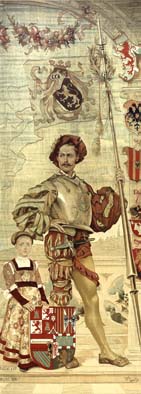M.A. Barbara Caen
Tapestries in the 19th Century
The dissertation analyses tapestry production in the 19th century. Due to the abundance of research, we focus on the production in France in comparison with some manufactures abroad. Although scholars in the 19th century such as Alfred Darcel, Edouard Gerspach, Jules Guiffrey and Eugène Müntz in France and Alexandre Pinchart and Alfred Wauters in Belgium dealt with this issue, little attention has been given to the topic during the 20th century. The most important publications include those by Fernand Calmettes (1912), Pierre Vaisse (1973), Pascal-François Bertrand (1995) and Chantal Gastinel-Coural (1996). Their contributions to the knowledge of the 19th century tapestry production are essential for the forthcoming research.
The first chapter gives a brief overview of the scholarly research about the tapestry production in the 19thcentury. This chapter will be divided into two main sections: the first concerning historiography, the second regarding the extant visual material related to tapestry production in the 19thcentury.
The following chapter questions the historical context – from the French Revolution until the eve of the First World War – to be a favourable context for tapestry production. The position of this medium as a craft and the status of the craftsman during the age of proto-industrialisation will be one of the main topics in the first part. The second part focuses on the social and artistic context in which the medium was displayed: in exhibitions, salons, museums and collections, national ceremonies and royal visits. A last part reflects on the perceptions on the contemporary production by 19th century scholars. In comparison with the historiographic part of the first chapter, this part will analyse the literary appreciation of the medium.
The third chapter illustrates tapestry production in relation to historical settings. An analysis of the iconographical themes in new national institutions, 'neo-style' architecture and renovated residences underlines the power of a historical medium during the rise of nationalism and the creation of nation states.
See German version
